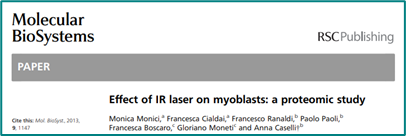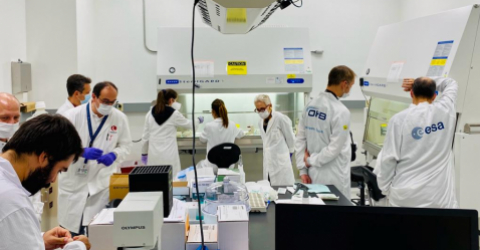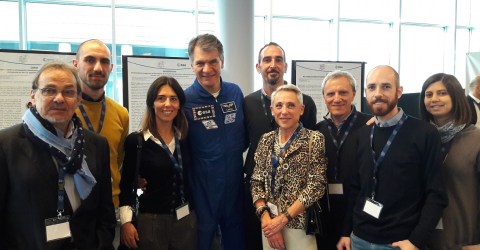As a lover of long-distance running, she's used to pacing fatigue and using patience to her advantage in achieving the goals she sets for herself.
As a researcher, it's not time that marks her day but rather her passion for concluding whatever experiment she’s working on.
Francesca Cialdai, a biologist who has been with the ASAcampus Group since 2007, following a number of fixed-term assignments, research grants and project contracts, formalised her commitment to the ASA Research Department in 2013.
“I am able to say that I witnessed the birth of the Joint Laboratory between ASA and the Department of Experimental and Clinical Biomedical Sciences of the University of Florence” she recalls.
Considering your professional cursus, who better than you can tell us what it means to be a researcher... and specifically an ASAcampus researcher...
Generally speaking, taking on the path of research requires a strong passion and motivation for one's work, which is anything but conventional, especially when it comes to time management. When you’re in the lab, the clock doesn't matter because your day is marked by other parameters, which depend exclusively on the studies you’re undertaking. But most of all, “doing research” means not being afraid to start over again and reorganise your work if the results don't come through, or if they're not properly replicated. But, the sacrifice is repaid when everything falls into place. These dynamics and this modus operandi also apply in the case of ASAcampus, where the difference lies in the environments where we perform our studies. Specifically, at the ASAcampus joint laboratory, we study the effects of physical types of stress like light, electromagnetic fields, mechanical stimuli and gravitational alterations, at a cellular and molecular level.
These studies also include those aimed at understanding the mechanisms underlying the effects generated by the application of ASA’s Laser Therapy and Magnetotherapy.
Describe one of your typical days, where time is not a limiting factor?
The first thing we do every day is all meet and take stock of the work in progress. Then, we set up the work in the lab. Since setting up an experiment often takes a lot of time, because there are so many steps involved, being coordinated is key. This is one of the reasons teamwork is so crucial, as is the atmosphere that must be created among colleagues: a calm environment is a sine qua non for us to think clearly and do our best work. Alongside the lab activities, there is plenty of desk work too. There are always projects to follow, documents to prepare, reports to draw up, but also material orders to manage. We are certainly never bored!
There must be plenty of challenges too...
It’s part of the game, especially when we’re conducting experiments. Each one is in fact regulated by a specific protocol, which consists of numerous different steps, and therefore requires special attention and utmost compliance with the parameters on which it is based. It is not unusual, however, for a series of unexpected problems to arise that can potentially affect the outcome. Fixing them is certainly one of the complications we need to reckon with.
Despite the difficulties one might encounter along the way, “doing research” offers important opportunities, for companies too…
Research is an essential component of a company’s growth, because it both adds value to whatever is produced or made, and lays the foundations for the development of new solutions. In the specific case of ASA, an in-depth understanding of the cellular and molecular mechanisms underlying the therapeutic effects enables the determination of bettering adjustments to protocols and, at the same time, helps to develop new and better-performing devices.
Of the research you have conducted for ASA, is there any one study you believe to be particularly important?
We have done and are doing a lot of research for ASA, but there is one study in particular I would like to mention, which we have been working on for several years and is aimed at investigating the mechanisms at the heart of the MLS® Laser Therapy anti-inflammatory effect. The results obtained thus far in this field of research have led to the publication of several scientific articles.











